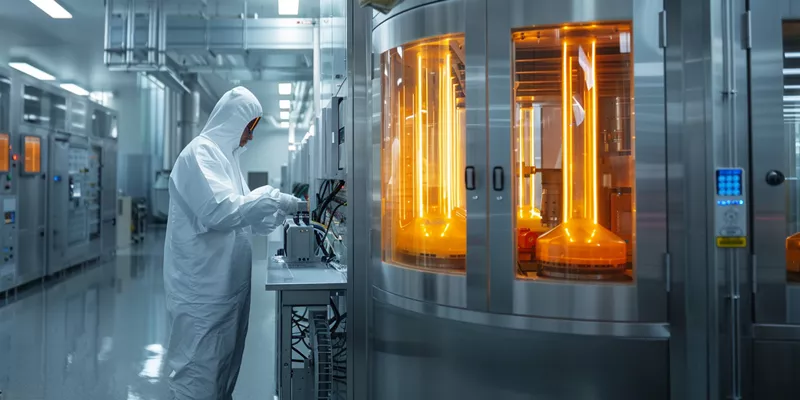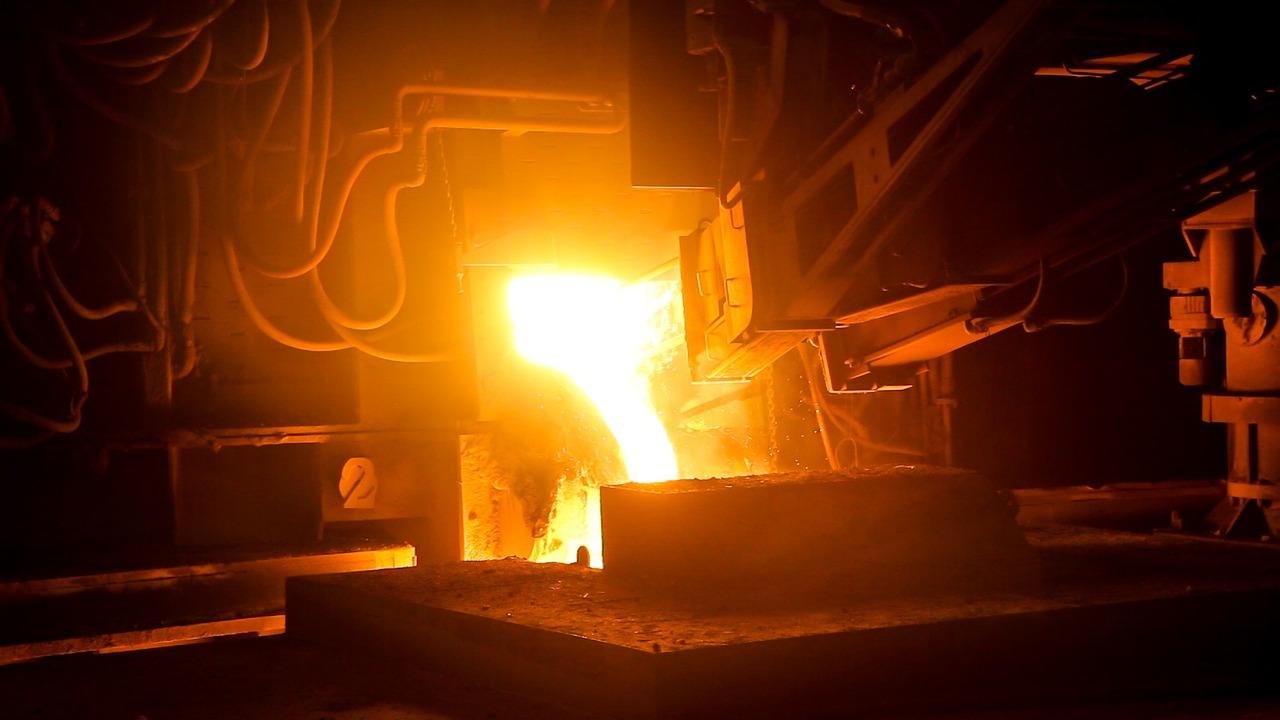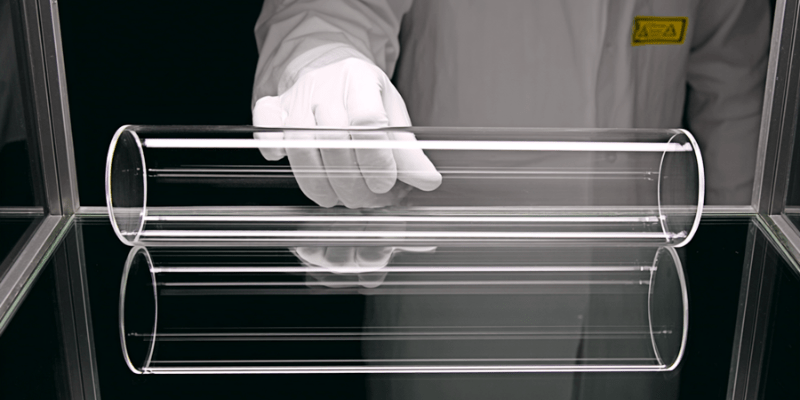Engineers and technical buyers face new challenges in 2025 when specifying quartz rods for high-temperature and precision applications.
Quartz rods deliver ±0.1% dimensional stability at 1000°C, but optimal performance depends on understanding thermal, chemical, and optical parameters, as well as supplier capabilities and cost drivers.
![]()
This guide provides a technical roadmap for selecting, benchmarking, and implementing quartz rods in advanced industrial and scientific systems.
Fundamental Properties of Quartz Rods in Industrial Systems
Quartz rods are engineered for demanding environments requiring high purity, thermal stability, and chemical resistance. Their unique properties make them essential in semiconductor, optical, and furnace applications.
Understanding these core characteristics is the foundation for reliable system design and long-term performance.
Thermal Expansion Coefficients (5.5×10⁻⁷/°C) and Stability Mechanisms
Quartz rods have a low thermal expansion coefficient of 5.5×10⁻⁷/°C, which minimizes dimensional changes during heating and cooling. This property ensures tight tolerances are maintained even at 1000°C.
The material’s crystalline structure resists deformation and cracking under rapid temperature cycling. Engineers can rely on quartz rods for applications with frequent thermal shocks.
Stable dimensions reduce the risk of misalignment and mechanical failure in precision assemblies.
Chemical Resistance in Acidic/Alkaline Processing Environments
Quartz rods are highly resistant to most acids and bases, except hydrofluoric acid. This chemical inertness protects both the rod and the process from unwanted reactions.
In semiconductor etching and chemical synthesis, quartz rods prevent contamination and maintain purity. Their resistance to corrosion extends service life and reduces maintenance.
Engineers should always verify compatibility with process chemicals to avoid unexpected degradation.
UV-VIS-NIR Transmission Profiles for Optical Applications
Quartz rods transmit light efficiently across the UV, visible, and near-infrared spectrum. This makes them ideal for optical instrumentation and photonic systems.
Transmission depends on material grade, surface finish, and diameter. High-purity rods with polished surfaces offer the best optical performance.
Engineers should request spectral transmission data from suppliers to ensure compatibility with their application.
Performance Benchmarking: Quartz vs Alternative Materials
Comparing quartz rods to alternative materials helps engineers make informed decisions for high-temperature and chemical environments.
Key factors include thermal stability, cost, and chemical resistance.
Thermal Stability Comparison: Quartz vs Alumina (1200°C Threshold)
Quartz rods maintain structural integrity up to 1200°C, while alumina rods can withstand even higher temperatures. However, quartz offers better dimensional stability and lower thermal expansion.
Alumina is more brittle and may crack under rapid thermal cycling. Quartz is preferred for applications requiring frequent heating and cooling.
Engineers should consider both maximum temperature and cycling frequency when selecting materials.
Cost-Performance Analysis for High-Temperature Applications
Quartz rods have a higher upfront cost than some alternatives, but their durability and low maintenance requirements reduce total ownership costs.
Alumina and other ceramics may be cheaper initially but require more frequent replacement. Cost-benefit analysis should include lifespan, downtime, and process yield.
Engineers should balance performance requirements with budget constraints for optimal results.
Chemical Resistance in Semiconductor Etching Environments
Quartz rods outperform metals and most ceramics in acidic and alkaline environments. Their chemical inertness prevents leaching and contamination during semiconductor etching.
Alternative materials may corrode or introduce impurities, compromising process integrity. Quartz rods maintain purity and support high-yield manufacturing.
Always review chemical compatibility charts and request supplier documentation for critical applications.
Application-Specific Selection Matrix for Quartz Rods
Different applications require tailored quartz rod specifications. A structured selection matrix helps engineers match rod parameters to system needs.
Consider purity, surface finish, and thermal shock resistance for each use case.

Semiconductor Processing: Purity Requirements (≥99.99% SiO₂)
Semiconductor manufacturing demands quartz rods with ≥99.99% SiO₂ purity to prevent contamination. High purity supports consistent wafer quality and device yield.
Request batch-specific purity certificates and third-party test reports. Purity is critical for processes like CVD1, diffusion, and etching.
Engineers should specify purity requirements in procurement documents to ensure compliance.
Optical Instrumentation: Surface Roughness Standards (Ra≤0.4μm)
Optical systems require quartz rods with surface roughness Ra≤0.4μm for minimal light scattering and maximum transmission. Polished rods support high-precision measurements.
Surface finish is verified using profilometry and visual inspection. Specify finish requirements based on instrument sensitivity.
High-quality surface finish improves signal-to-noise ratio and measurement accuracy.
High-Temperature Furnaces: Thermal Shock Resistance Protocols
Furnace applications require quartz rods with high thermal shock resistance. Protocols include gradual ramping and cooling, and specifying wall thickness for strength.
Thermal shock resistance is tested using ASTM E2282 or equivalent standards. Engineers should request test data from suppliers.
Proper protocols extend rod lifespan and reduce maintenance costs in high-temperature environments.
Design Considerations for Precision Quartz Rod Systems
System design impacts the performance and reliability of quartz rods. Engineers must address mounting, vibration, and sealing requirements.
Proper design ensures safe operation and long service life.
Mounting Solutions for Thermal Expansion Compensation
Quartz rods expand when heated, so mounting systems must allow for movement. Use flexible supports or expansion joints to prevent stress buildup.
Avoid rigid clamps that can induce cracking during thermal cycling. Design mounts to accommodate both axial and radial expansion.
Regular inspection of mounting hardware helps prevent unexpected failures.
Vibration Damping Requirements in Dynamic Load Applications
Dynamic loads and vibration can cause fatigue and failure in quartz rods. Use vibration-damping materials and secure brackets to minimize movement.
Engineers should calculate expected vibration frequencies and design supports accordingly. Damping reduces noise and extends component life.
Periodic monitoring and maintenance ensure continued vibration protection.
Sealing Techniques for Ultra-High Vacuum Environments
Ultra-high vacuum systems require leak-tight seals around quartz rods. Use metal or elastomeric seals compatible with quartz and process conditions.
Design interfaces to minimize dead volume and support easy assembly. Test seals under vacuum before full-scale operation.
Proper sealing prevents contamination and maintains system integrity.
Machining and Quality Control Protocols
Precision machining and rigorous quality control are essential for high-performance quartz rods.
Follow best practices for cutting, handling, and inspection to ensure dimensional accuracy and purity.
Diamond Cutting Tolerance Controls (±0.05mm)
Diamond saws and laser cutters achieve length and end-face tolerances of ±0.05mm. Proper technique minimizes chipping and maintains surface quality.
Request process validation and inspection reports from your supplier. Accurate cutting supports easy integration and reliable performance.
ISO 14644-1 Cleanroom Handling Standards
Cleanroom handling prevents contamination and supports compliance with ISO 14644-1. Use gloves, clean tools, and dust-free environments during assembly and packaging.
Suppliers should provide cleanroom certification and traceability documentation. Proper handling maintains purity and performance throughout the rod’s lifecycle.
ASTM E228 Thermal Expansion Verification Testing
Thermal expansion is verified using ASTM E228 protocols. This ensures rods meet specified coefficients and perform reliably under thermal cycling.
Request test data for each batch and review results for compliance. Verification supports process validation and regulatory requirements.
Installation and Maintenance Best Practices
Proper installation and maintenance maximize the lifespan and performance of quartz rods.
Follow best practices for thermal cycling, cleaning, and inspection to prevent premature failure.
Thermal Cycling Limits (≤80°C/min Ramp Rate)
Limit temperature ramp rates to ≤80°C/min to reduce thermal shock risk. Gradually ramp up and cool down temperatures.
Monitor temperature profiles and adjust heating rates as needed. Document cycling protocols for process validation.
Chemical Cleaning Procedures for Process Residues
Use acid baths (e.g., nitric acid) or ultrasonic cleaning for routine maintenance. For stubborn residues, use piranha solution or HF-free cleaners as appropriate.
Rinse thoroughly with deionized water and dry in a clean environment. Avoid abrasive cleaners that can scratch the surface.
Microcrack Inspection Under 10x Magnification
Inspect rods visually and with 10x magnification for cracks or inclusions before each use. Microcracks can propagate under stress and lead to failure.
Establish a regular inspection schedule and document findings. Replace any rods showing signs of damage to maintain system reliability.
Supplier Evaluation Framework
Selecting a reliable supplier is critical for consistent quality and performance in precision applications.
Evaluate suppliers based on certification, traceability, and customization capabilities.

Certification Requirements (ISO 9001/IATF 16949)
Suppliers should provide ISO 9001 or IATF 16949 certification for quality management. Certification ensures adherence to international standards and consistent product quality.
Material Traceability Documentation Standards
Request full traceability documentation for each batch of quartz rods. This includes raw material sources, production records, and test reports.
Traceability supports compliance and troubleshooting in regulated environments. Reliable suppliers maintain transparent records.
Customization Capability Assessment Criteria
Assess the supplier’s ability to provide custom diameters, lengths, and surface finishes. Customization is often required for unique laboratory or industrial setups.
Confirm lead times and feasibility before placing orders. Reliable suppliers support engineering consultation and rapid prototyping.
Cost Drivers and Procurement Strategies
Managing costs and optimizing procurement are key for successful implementation of quartz rods.
Understand how diameter, order quantities, and lead times affect total cost and project timelines.
Diameter vs Cost Correlation Analysis (3-50mm Range)
Larger diameters and tighter tolerances increase manufacturing complexity and cost. For example, moving from 10mm to 30mm diameter can triple the price per meter.
Balance precision requirements with budget constraints. Standard sizes are more economical and readily available.
Minimum Order Quantity Negotiation Tactics
Minimum order quantities (MOQs) can impact R&D budgets. Negotiate prototype MOQs of ≤5 units to reduce initial costs and support rapid iteration.
Suppliers may offer flexible terms for new product development. Confirm MOQ policies before committing to large orders.
Lead Time Management for Custom Specifications
Custom quartz rods typically require 4–6 weeks for fabrication and delivery. Lead times depend on complexity, order volume, and supplier capacity.
Plan ahead for urgent projects and communicate deadlines clearly. Expedited production and shipping may be available at additional cost.
Conclusion
Quartz rods deliver unmatched stability and purity for high-temperature and precision applications. Careful selection, design, and supplier evaluation ensure reliable performance and cost control.
Achieving precision with quartz rods is a strategic engineering challenge. Leverage TOQUARTZ’s direct factory supply, engineering support, and rapid delivery to ensure your system meets the highest standards—contact us for expert consultation and custom solutions.
FAQ (Frequently Asked Questions)
What is the typical dimensional stability of quartz rods at 1000°C?
Quartz rods maintain ±0.1% dimensional stability at 1000°C, supporting precision applications.
How do I specify and verify purity for semiconductor-grade quartz rods?
Request ≥99.99% SiO₂ content and third-party purity certificates. Verify with ICP-OES or GDMS test data.
What are the best practices for cleaning and inspecting quartz rods?
Use acid baths or ultrasonic cleaning for maintenance. Inspect for microcracks under 10x magnification before each use.
How does quartz compare to alumina or glass rods for high-temperature use?
Quartz offers better dimensional stability and chemical resistance, while alumina withstands higher temperatures but is more brittle. Glass rods are less suitable for demanding environments.
References:





